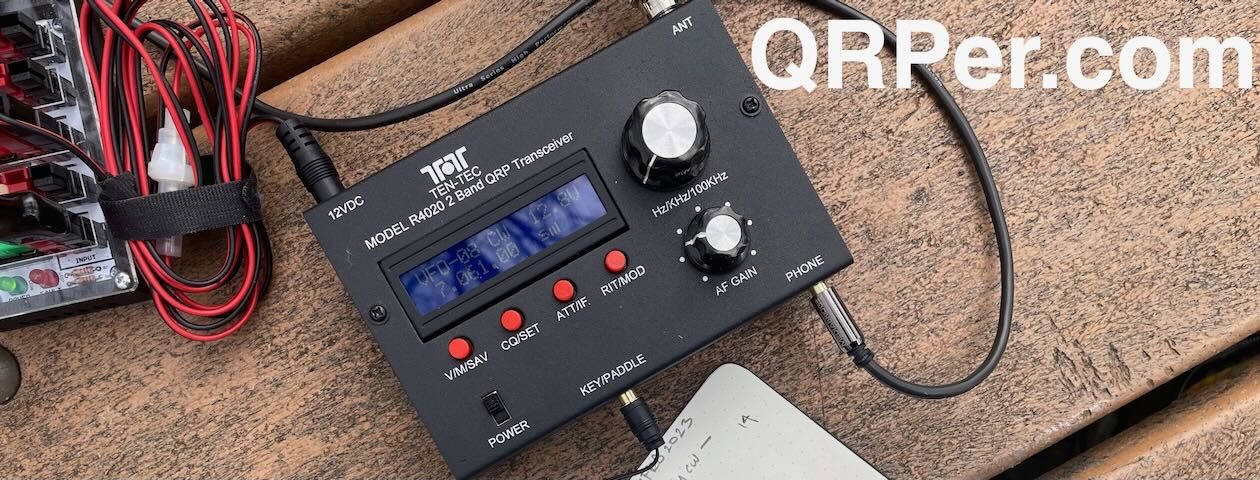Many thanks to Christian (IX1CKN) who shares the following field report:
Friedrichshafen: POTA Across Borders
by Christian (IX1CKN)
The Friedricshafen fair is one of the most interesting events for its social aspects, where you can finally put a face to colleagues whose voices you’ve only ever heard. Among the various OM (radio amateurs) I met this year was Gabriele IT9RGY, a flagbearer of the Italian Contest Club. When he recognized Andrea IW0HK and me, he said, referring to our respective SOTA/POTA activities: “You two are the real deal.”
I found that to be a very powerful statement, and I am grateful to him for it. Personally, I try to document each outing to capture the sensations it gave me, but also in the hope of inspiring someone. Andrea is more succinct than I am (if we were all the same, the world would be boring), but his spirit is identical. Parks on the Air (POTA) is a state of mind. It was no coincidence that, being in Germany for the Hamradio Messe, we had planned a series of activations.
Our schedule was tight and ambitious, and just completing it was a source of happiness, but there’s more to tell. In Germany, dinner time isn’t synchronized with Roman schedules. So, on Friday evening, after leaving the restaurant (for dinner with the Summits On The Air group) at 20:23, I looked at Hotel-Kilo and said, “If I go to bed now, I’ll digest in a week; let’s go activate a reserve!”
 The easiest option in the area (after a disastrous experience last year in DE-0156, the park in the town center hosting the fair) was DE-0766, the Seewald Landscape Reserve. It’s near the FRN airport (and thus not far from the fairgrounds), in a fully bucolic setting. A narrow road cuts through meadows, with footpaths and bike paths leading into a wooded area.
The easiest option in the area (after a disastrous experience last year in DE-0156, the park in the town center hosting the fair) was DE-0766, the Seewald Landscape Reserve. It’s near the FRN airport (and thus not far from the fairgrounds), in a fully bucolic setting. A narrow road cuts through meadows, with footpaths and bike paths leading into a wooded area.
 We parked the car in one of these spots. It took only a moment to set up the vertical antenna in the field, but the presence of a swarm of mosquitoes as big as F-18 Hornets advised us to operate from inside the car to save our skin (literally).
We parked the car in one of these spots. It took only a moment to set up the vertical antenna in the field, but the presence of a swarm of mosquitoes as big as F-18 Hornets advised us to operate from inside the car to save our skin (literally).
 Andrea turned on the KX-3 (10 watts would be our fixed power for this trip), and the 14 MHz calls began. Right away, a very strong IZ3QFG Dario (just 380 km from us) answered, highlighting an unusually short skip.
Andrea turned on the KX-3 (10 watts would be our fixed power for this trip), and the 14 MHz calls began. Right away, a very strong IZ3QFG Dario (just 380 km from us) answered, highlighting an unusually short skip.
 We logged 20 QSOs in 30 minutes… Many were from Italy (Spartaco from Grosseto at full scale, Mauro I1JQJ always active, and Beppe I1WKN a constant), with two “park to park” contacts. A classic for many OMs in the area, but also a great mood booster and a tasty appetizer for the next day… Continue reading Friedrichshafen: Christian and Andrea’s Multi-Country POTA Rove
We logged 20 QSOs in 30 minutes… Many were from Italy (Spartaco from Grosseto at full scale, Mauro I1JQJ always active, and Beppe I1WKN a constant), with two “park to park” contacts. A classic for many OMs in the area, but also a great mood booster and a tasty appetizer for the next day… Continue reading Friedrichshafen: Christian and Andrea’s Multi-Country POTA Rove


























































































